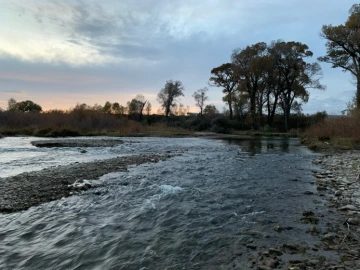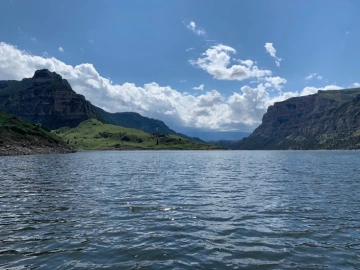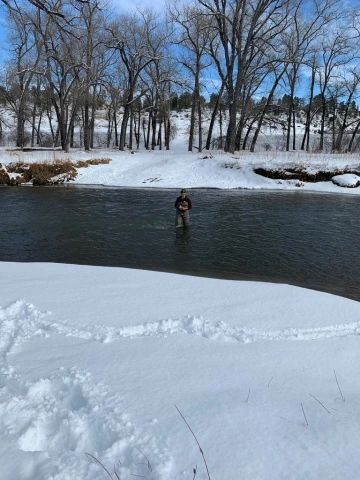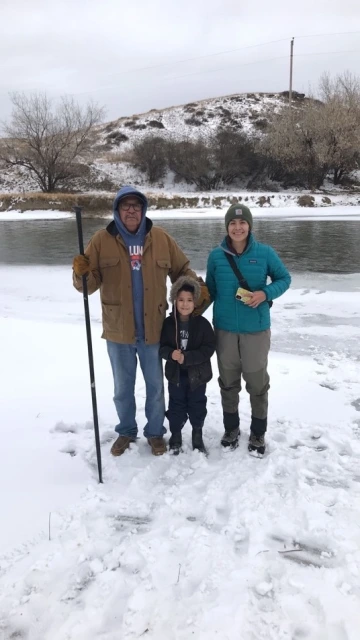Responsibility of an Apsáalookbia (Crow Woman) to the protection of Apsáalooke bilé (Crow Water)
I was raised by an Apsáalooke/Crow matriarch who also came from strong, independent Apsáalookbia/Crow women. Apsáalooke people are a matrilineal and, traditionally, an egalitarian society. It is innately known that we have three mothers: the earth, our homes, and our birth mothers. We are taught that we must respect all three mothers and do what we must so that they stay protected. Our mothers are our first teachers and have taught us much of what we know as Apsáalooke people. We were taught the stories of Hisshiishduwiia/Red Woman, the Chíilapsahpua/Seven Sacred Big Horn Rams, rock medicine, and old man coyote stories. In particular, it was the stories of Hisshiishduwiia/Red Woman and the seven sacred rams that struck a distinct chord with me. Both of these stories remind me of the inherent responsibility I have to protect all that has provided. I know that I only play a small role in protecting but I hope that role has a much larger impact than I can imagine.

It is said that when the last duck succeeded by bring mud to the water’s surface that Iichiikbaalia/First Maker created the earth and Biluke/Our side (referring to strictly Crow people) from those ground materials. After land was created, it was the feminine power who brought about the lifeline that it was Hisshiishduwiia/Red Woman who created waterways. Apsáalooke elder, George Reed, states, “Red Woman appeared and pulled out her root digger and started scratching the earth and made the springs, creeks, and rivers. As the water flowed from the riparian areas, plants started to grow. Red Woman said . . . ‘If you are sick take the roots of the plants and eat and you will be healed’”(Bull Chief 2016). It was the might and doings of Red Woman that allowed water to flow in the land that we live on. It is now the duty of Awakkulé/Little People, because they “make sure that the rivers flow and the grass grows . . . [and] they take care of the Crows” (Grant Bulltail 2018).
Photo 1. Location where I was raised and favorite swimming spot along the Little Bighorn River on the Crow Reservation. Courtesy: JoRee LaFrance (2019)

It is our duty, as Apsáalooke people, to pray for and give gifts to Awakkulé and to protect the land that we are merely borrowing from our children. We are also reminded of the time when Uuwaatisaash/Big Metal was saved by the Chíilapsahpua/Seven Sacred Big Horn Rams, and he was eventually raised among them. Uuwaatisaash/Big Metal became a prominent leader amongst Apsáalooke people, and we were taught that the rivers that flow through our home must always be named after the sacred seven rams. These rivers represent our identity as Apsáalooke, and our ancestors have taught as various ways that we must take care for the river. We are told to feed the river our finest meats when the cotton first falls, to jump in the freezing water after a sweat lodge ceremony, and to always respect water and Bimmuummaalakoolé/water beings that make their own in our shared waters. I believe that the water is reflection of who we are because our sole identity as Apsáalooke people depends on this very life-source.
As a result of broken promised and inhumane federal policies, the Crow Reservation which is home to the various bands that make up Apsáalooke people decreased to a fractional size of 2.5 million square acres. Gratefully, we still live along the Big Horn and Little Bighorn Rivers and we have water rights to surface and groundwaters to sustain our people. I grew up along the Little Bighorn River and that flowing water is all I have ever known. We still rely on this river for domestic, municipal, tribal, individual, cultural, and spiritual uses. We still have the teachings of our ancestors and our language is still spoken. We are teachers, lawyers, scientists, health professionals, ranchers, descendants, caretakers, and the future of Apsáalooke people. I believe that is our time to act and to draw on our teachings to ensure our security as strong, resourceful, and thriving people.
Photo 2. Yellowtail Dam Reservoir also known as the Big Horn River Canyon. Near the location of where the seven sacred rams saved Big Metal. Courtesy: JoRee LaFrance (2019)

As I have acknowledged my role as a contemporary Apsáalookbia/Crow woman, I have found a way to braid my understandings of this world into a practical skillset that can provide my own efforts in protecting this way of being. With modern technology, I have been afforded the opportunity to take a closer look at the molecular level of what is happening in our water systems. As a second year PhD student in the University of Arizona Department of Environmental Sciences, I am researching surface water quality within the Little Bighorn River watershed. I aim to understand the impact on contaminant behaviors from the various water flows within the Little Bighorn River. The changing water flow occurs as a result of the changing seasons such as high flows in June when the snow is melted in the mountains, or the lowest flow of water in the winter when water is being stored in the ground and in snow-packs. I am working to identify contaminants such as heavy metals, pesticides, herbicides, and perfluoroalkyl substances better known as PFAS. These contaminants come from a variety of sources such as natural elements, mining activities, intense agricultural development, water treatment discharge points, and man-made products. I have taken it upon myself to determine what contaminants are elevated in the Little Bighorn River to have a better understanding of its long-lasting impacts. I want to ensure that my people will always have access to clean, healthy water systems and that Bimmuummaalakoolé/water beings are always protected and respected Ultimately, I strive to support my tribe in their own efforts in setting their own water quality standards on the basis of cultural practices. This can be done under the Clean Water Act when a tribe is granted treatment-as-state status from the United State Environmental Protection Agency. This is absolutely crucial in the future of the quantity and quality of water on the Crow Reservation, home to Apsáalooke people.
Photo 3. During my first sampling campaign in the Little Bighorn River back in December 2019. Courtesy: JoRee LaFrance (2019)

As the seventh generation from Chief Pretty Eagle, the last principal chief of Apsáalooke people, it is my duty to do all that I can in order to protect the advancement and survivance of my people. It is the old stories and teachings that have informed the work that I do. As an Apsáalookbia/Crow woman, I take the teachings and independence from strong women like my mother, grandmothers, Biáwacheeitchish/women chiefs, and Hisshiishduwiia/Red Woman. If it had not been for the support, love, and teachings I have been fortunate to know such as those that come from Hisshiishduwiia/Red Woman and the Chíilapsahpua/Seven Sacred Big Horn Rams, I would not know where I would be. If it had not been for my family and people, I would not be where I am today. There is nothing more honorable than to have the opportunity to learn technical and professional skills to protect a being of water that has always provided for my ancestors, myself, and our future children. I know that the work that I do is much bigger than I am. I am forever grateful to be Apsáalooke and to come from our home. When my work inspires others to believe more in themselves that is when I know that I am fulfilling my purpose. My dream is that all Apsáalooke people can, unapologetically, be themselves and that I inspire the next generation of Apsáalooke scientists.
Photo 4. Descendants of Chief Pretty Eagle along the banks of the Little Bighorn River. I am pictured with my grandfather, Joe Whiteclay, and my nephew. This is a four-generation photo. Courtesy: JoRee LaFrance (2019)

